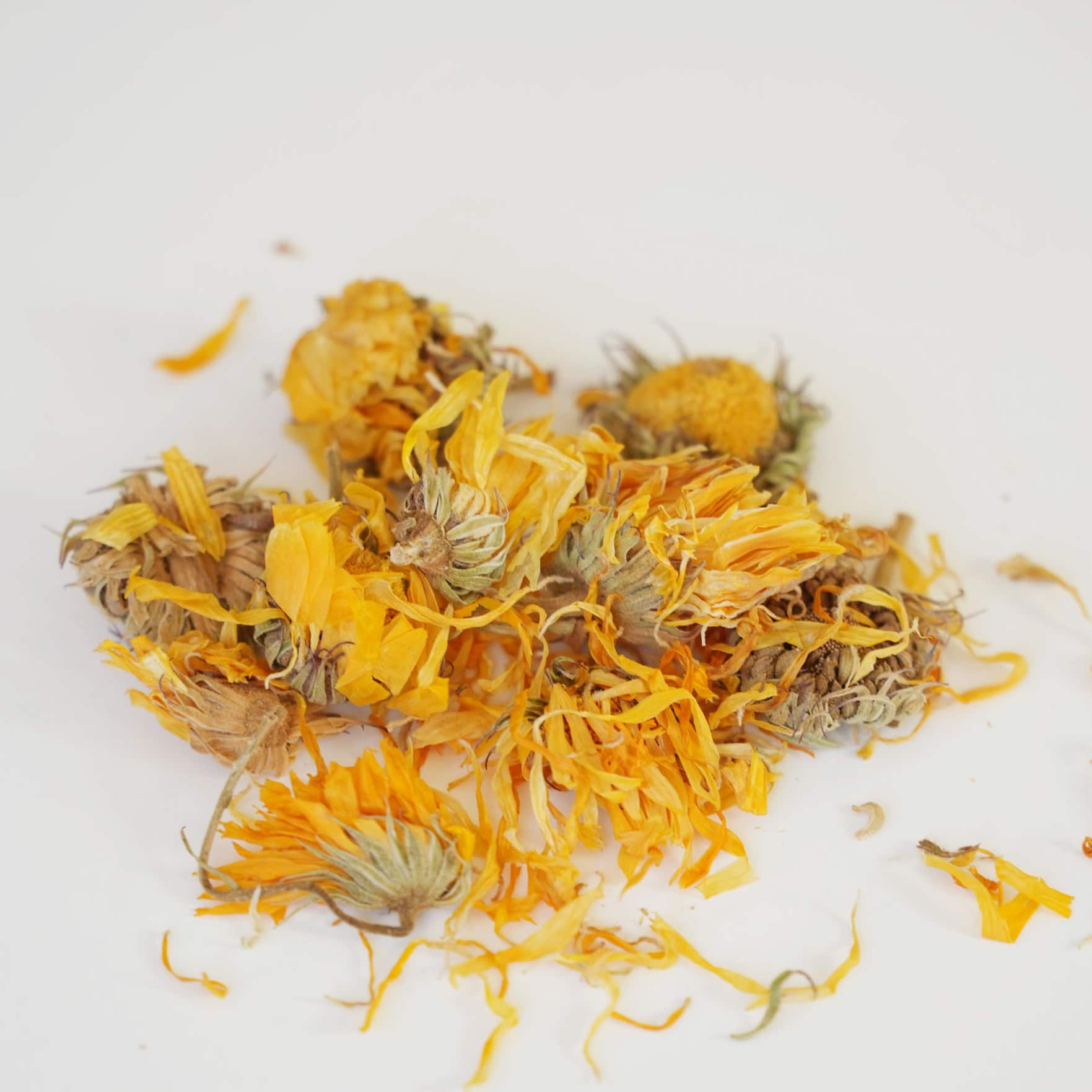07 Jul 5 Health Benefits of Calendula Tea
Calendula is also known as marigold, it is a vibrant orange and yellow flower native to the Mediterranean. It’s famous for its medical properties and can tackle bacteria, inflammation and viruses.
There’s approximately 15-20 species of calendula that typically grow to about 30 cm tall. It has a tendency to bloom on the first day of every month, a trait that is believed to have inspired its name which reflects the latin word ‘kalendae,’ meaning calendar
Interesting Facts
HERB OF THE SUN
Calendula is known as the ‘herb of sun’ symbolising cheerfulness and hope. It’s bright right flowers are believed to bring positivity and good fortune
INSECT REPELLENT
In In the garden calendula act as a natural insect repellent. It attracts insects such as ladybugs and bees while deterring harmful pests such as aphids.
SPACE eXPERIMENT
Calendula was part of an experiment in space to study the effects of microgravity on plant growth.
NON MEDICAL USES OF CALENDULA
In ancient Egypt and India, calendula is use to dye fabrics and it symbolises life, prosperity and protection. During the Middle Ages, calendula was used in European dishes.
How to Brew Calendula Tea?
It is very easy to prepare calendula tea – just follow the brewing instructions below. If you want to create a tincture for topical application, we recommend boiling calendula flower for 5-10 min instead.
Ingredients:
2g of dried calendula, hot water
Method:
– Pour 250 ml of hot water
– Cover the mug with the saucer and steep for 5 mins
– Strain the tea to remove the petals and enjoy!

To get the perfect brew every time, take a look at our tea infuser glass cup.
Calendula Tea Flavour Profile
Calendula tea has a mild earthy flavour. Perfect for anyone who prefers a less intense herbal tea. It has a subtle bitter undertone when brewed for too long but paired with a natural sweetener like honey it balances it out. A dash of cinnamon or ginger can make it a comforting drink for cooler weather.
Calendula Tea Nutritional Profile
– Essential Vitamins: Calendula offers small amounts of Vitamins A and Vitamins C, important for vision, immunity, and cell health
– Rich in Carotenoids: These plant pigments give calendula its bright color and act as antioxidants, protecting your cells from damage., and cell health
– Anti-inflammatory Boost: Flavonoids, another group of beneficial compounds in calendula, may help reduce inflammation linked to many chronic illnesses.
Benefits of Calendula Tea
1. Wound Healing
Calendula contains antioxidants like flavonoids, might accelerate wound healing in two ways. Firstly, it can reduce inflammation, which promotes faster tissue regeneration.
Secondly, it might stimulate the growth of new blood vessels around the wound. This improved blood flow delivers essential nutrients and oxygen, further facilitating the healing process.


2. Oral Health
Calendula may have some antimicrobial activity, which could be beneficial for oral health. This might help combat harmful bacteria in the mouth that contribute to plaque and gingivitis.
Studies suggest calendula can help fight gingivitis the early stage of gum disease. A 6-month study involving 240 people with gingivitis showed a 46% reduction in inflammation levels for those using a calendula mouthwash compared with 35% in the control group.

3. Anti-Aging
Your skin has a natural barrier that helps keep hydration in and irritants out. The barrier can get worn down causing your skin loses its ability to retain moisture.
Calendula is rich in fatty acids that act like nature’s moisturisers, keeping skin hydrated. This can help delay the appearance of wrinkles and fine lines
studies show that calendula extract may enhance your skin and stimulate its firmness and elasticity, which may delay signs of aging.

4. Menstrual Relief
Calendula is said to induce menstruation and relieve menstrual cramps, however there is no scientific evidence to support this.

5. Nappy Rash
Nappy rash is a common irritation for many babies and toddler Topical calendula can be a gentle addition to your diaper-changing routine.
A 2012 study published in the journal “BMC Complementary and Alternative Medicine” compared the effectiveness of topical aloe vera and calendula ointment for treating a nappy rash.

Want to uncover more herbal teas with powerful benefits? Explore the wonders of African Coralwood Tea
Calendula Tea Possible Side Effects
Allergic Reaction: People allergic to ragweed, daises, marigolds, or other plants in the Asteraceae/Compositae family might experience allergic reactions to calendula. Symptoms count include rash, itching, swelling, difficulty breathing. If you notice any allergic reactions, discontinue use and consult a doctor.
Pregnancy and Breastfeeding
While calendula has been used traditionally for various purposes, there’s a lack of scientific evidence to support its safety during pregnancy and breastfeeding.
– Potential Uterine Stimulation: Calendula may make your uterus more active. This could be problematic during pregnancy, potentially increasing the risk of miscarriage or preterm labor.
– Limited Research on Safety: There haven’t been enough studies specifically evaluating the safety of calendula use in pregnant or breastfeeding women.
What’s the Bottom Line on Calendula Tea Benefits?
If you’ve ever dealt with eczema, nappy rash, or even sunburn, calendula might be worth a try. Studies have shown that calendula’s anti-inflammatory properties can significantly reduce redness, irritation, and discomfort. Its ability to heal wounds is supported through research.
Topical calendula can speed up wound closure and reduce inflammation, promoting a healthy healing process.
Overall, calendula tea offers a warm and soothing experience which you can enjoy knowing it’s historical uses and the benefits.
Want to explore more herbal teas?
Click here!




Where imagination mixes with tea-rrific ideas, you’ll find me, a creative marketer in the making. Love all things music, travel, trying new foods and capturing moments on a camera.









No Comments